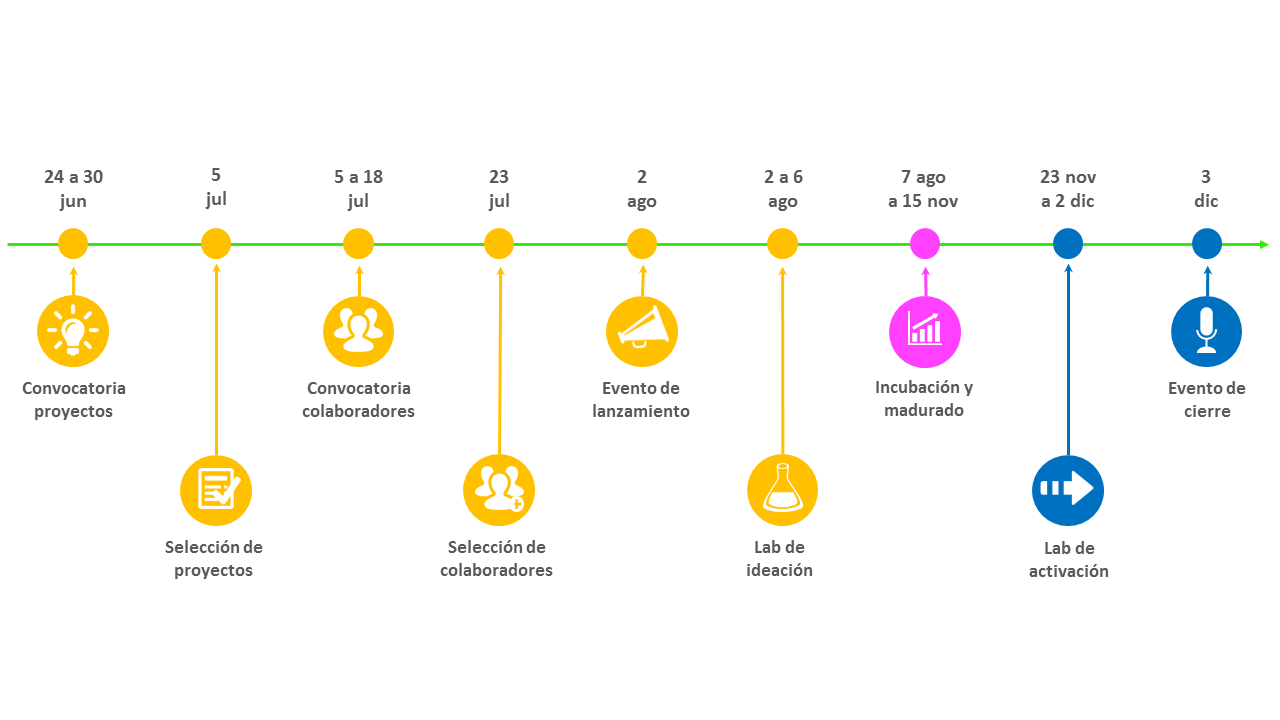Convocatoria a colaboradoras/es para el #LABICMEX
(Descarga estas bases en pdf)
Esta convocatoria está dirigida a personas del Estado de Guanajuato y cualquier parte del mundo interesadas en colaborar en alguno de los 5 proyectos que generan beneficios para personas con discapacidad y que formarán parte del LABICMEX, un programa de incubado y maduración de proyectos durante 10 meses, con el objetivo final de ser activados en el Estado de Guanajuato, México.
El Proyecto de Innovación Ciudadana de la Secretaría General Iberoamericana (SEGIB) y el Gobierno del Estado de Guanajuato a través del Instituto de Innovación, Ciencia y Emprendimiento para la Competitividad para el Estado de Guanajuato (Idea GTO), junto a la Dirección General de Asociaciones Internacionales (INTPA) de la Comisión Europea, convocan a personas interesadas en colaborar en proyectos sobre “accesibilidad y autonomía de personas con discapacidad”, para su incubación, maduración y activación en el Laboratorio de Innovación Ciudadana, LABICMEX.
El #LABICMEX contará con la colaboración de la Agencia Mexicana de Cooperación Internacional para el Desarrollo (AMEXCID), la Agencia Española de Cooperación Internacional para el Desarrollo (AECID), el Gobierno del Estado de Guanajuato mediante el Instituto Guanajuatense para las Personas con Discapacidad, el Sistema para el Desarrollo Integral de la Familia, la Secretaría de Desarrollo Social y Humano, la Secretaría de Salud, junto a la Universidad de Guanajuato, el Grupo Social ONCE, CIATEC, la Escuela Nacional de Estudios Superiores/UNAM, UPIIG y Njambre.
Todas las personas interesadas en colaborar en los proyectos seleccionados para el #LABICMEX deberán completar y enviar el formulario (ver enlaces en el punto 1, Objeto de la convocatoria) según las fechas detalladas:
Apertura de convocatoria: 5 de julio de 2021
Cierre de la convocatoria: 18 de julio de 2021
Publicación de resultados: 23 de julio de 2021
Los resultados se publicarán en las páginas web de Innovación Ciudadana y de IDEA Guanajuato.
Los proyectos a los que puedes inscribirte como colaborador/a son:
| Proyecto | ConTacto |
| Descripción | Impresión en 3D de objetos que permitan a los niños con discapacidad visual conocerlos mediante el tacto, tales como monumentos, órganos internos del cuerpo, animales, u obras de arte. El proyecto, centrado en el área educativa, se acompaña de un programa de formación en tecnologías de fabricación digital para profesores. |
| Perfiles requeridos |
|
| Proyecto | Elevaciones |
| Descripción | Silla con ruedas de bipedestación destinada a niños con parálisis cerebral y afecciones similares. Su diseño permite la transición del cuerpo de una posición sentada a una erguida, además de permitir el desplazamiento del usuario. Esta silla mejora las funciones digestivas, actividades diarias y logra un aumento de la autoestima. |
| Perfiles requeridos |
|
| Proyecto | GekkoLab – Autofabricantes |
| Descripción | Prótesis y productos de apoyo para miembros superiores impresos en 3D. Estas prótesis a bajo coste y diseño personalizado son tanto mecánicas como de un desarrollo innovador que permite el intercambio de gadgets con distinta utilidad para la persona según la actividad. |
| Perfiles requeridos |
|
| Proyecto | Marimba inclusiva |
| Descripción | Dispositivo de enseñanza musical para personas con discapacidad auditiva, basado en la marimba y otros instrumentos musicales, que con una estructura de videojuego utiliza sensores electrónicos, proyección de elementos visuales y actuadores táctiles que por medio de vibraciones logran transmitir al cuerpo el ritmo musical. |
| Perfiles requeridos |
|
| Proyecto | Minibot |
| Descripción | Robot que ayuda a niños y jóvenes con lento aprendizaje o autismo a desarrollar sus capacidades de enfoque, aprender colores, aprender a escribir y dibujar, operaciones matemáticas, a la vez que acercarse a la robótica. |
| Perfiles requeridos |
|
El LABICMEX es el 7° laboratorio de innovación ciudadana de la SEGIB que, en esta ocasión, presenta una propuesta novedosa que introduce adaptaciones por motivos de la pandemia de la COVID-19. Esto ha permitido mejorar el modelo LABIC añadiendo fases para la implementación de los proyectos en territorio.
Esta convocatoria está dirigida a personas del Estado de Guanajuato, o cualquier parte del mundo, interesadas en colaborar en alguno de los proyectos seleccionados para el #LABICMEX, que será un programa de incubado y maduración durante 10 meses, para luego ser activados en el Estado de Guanajuato, México.
Se pueden inscribir a esta convocatoria:
- Personas del Estado de Guanajuato que se adecuen a los perfiles solicitados por los proyectos. Cada proyecto incorporará hasta un máximo de cuatro (4) colaboradores de Guanajuato.
- Personas de cualquier parte del mundo (incluyendo México) que se adecuen a los perfiles solicitados por los proyectos. Cada proyecto incorporará hasta un máximo de dos (2) colaboradores internacionales o de otros estados de México.
Luego de la publicación de los proyectos seleccionados, se abre la presente convocatoria para colaboradoras/es. Las personas seleccionadas se unirán al promotor/a del proyecto, quedando conformado el equipo.
A partir de entonces, comienza el LABICMEX que se desarrollará durante 10 meses y se subdivide en 3 fases: ideación, maduración, activación. Durante todo este tiempo los proyectos estarán acompañados por la organización compuesta por: el equipo de Innovación ciudadana de la SEGIB, el equipo de IDEA GTO y el equipo de mentoría especializado en el escalado de proyectos.
FASE I. Ideación
Comienza el 26 de julio de 2021 con la conformación de los equipos, sus primeros intercambios y la formación en modelos de auto sostenibilidad y escalado de proyectos.
Del 2 al 6 de agosto de 2021 se organizará el laboratorio de ideación, en formato online, donde se trabajará en el diseño de mejoras y adaptaciones al prototipo.
También, durante esta semana, junto a la organización, se trabajará sobre la propuesta de un plan de acción para su maduración durante los próximos meses, y su posterior activación en el Estado de Guanajuato.
FASE II. Maduración
Esta fase inicia en agosto con la primera sesión de mentoría online donde se trabajará en la definición de un plan de acción y el presupuesto a ejecutar. La fase continúa hasta el 15 de noviembre, momento de la última mentoría.
Durante toda la fase, los equipos se concentrarán en ejecutar el plan de acción para la maduración de sus proyectos y el diseño de su activación en Guanajuato, con el apoyo del equipo de mentoría quincenal a distancia.
El equipo de Innovación Ciudadana dará acompañamiento continuo para gestionar los aspectos logísticos, administrativos y financieros de cada uno de los proyectos. Mientras que, el equipo IDEA GTO dará apoyo para conectar con instituciones, comunidades y diversos actores del ecosistema de Innovación y Emprendimiento del Estado.
FASE III. Activación
Esta fase inicia con la realización del Laboratorio de Activación del 23 de noviembre al 3 de diciembre 2021 de manera presencial en la ciudad de Guanajuato (México). Allí los proyectos tendrán la oportunidad de comenzar la implementación del piloto en el territorio junto a instituciones, comunidades y diversos actores del ecosistema de Innovación y Emprendimiento del Estado con el acompañamiento de la organización.
Hasta el mes de mayo de 2022, los proyectos podrán continuar con acciones para consolidar su implementación en Guanajuato, momento en el que entregarán el informe de resultados a la organización.
Imagen 1. Aquí se especifican las actividades que se realizarán en el LABICMEX. Convocatoria de proyectos (24 a 30 de junio), selección de proyectos (5 de julio), convocatoria de colaboradores (5 a 18 de julio), evento de lanzamiento (2 de agosto), laboratorio de ideación (2 a 6 de agosto), Incubación y madurado (7 de agosto a 15 de noviembre), laboratorio de activación en Guanajuato (23 de noviembre a 2 de diciembre), evento de cierre en Guanajuato (3 de diciembre).
4. RECURSOS TÉCNICOS Y FINANCIERO
La organización proporcionará los siguientes recursos:
- Recursos de hasta 10.000 euros para cada proyecto seleccionado.
Se pondrá a disposición un importe máximo de 10.000 euros (impuestos incluidos) a cada proyecto desde el inicio del programa que deben ser destinados a las inversiones necesarias para la maduración y el escalado del proyecto. El presupuesto será elaborado por el equipo del proyecto con el acompañamiento de la organización.
- Mentoría especializada.
Se dispondrá de un equipo de mentoras y mentores especializados en emprendimiento social y escalado de proyectos con quienes se mantendrán sesiones de mentoría hasta el Laboratorio de Activación inclusive.
- Acceso a formación.
Se dispondrá de formaciones específicas en temas de maduración y escalado de proyectos con perfil social.
- Acceso a instituciones y comunidades y especialistas.
Se dispondrá de acompañamiento para la identificación y conexión con instituciones y comunidades de interés para la implementación de los proyectos en Guanajuato.
5. EL ROL DE LAS PERSONAS COLABORADORAS
Las personas colaboradoras son quienes aportan innovación, mediante su conocimiento y experiencia, para generar un mayor valor agregado a la idea original del proyecto, que tiene por objetivo mejorar la vida de personas con discapacidad.
Para ello, trabajará en equipo junto a otros colaboradores/as y el promotor/a del proyecto, durante todo el programa.
Una vez finalizadas las 3 fases, los nombres de las personas colaboradoras se incluirán en los créditos, del mismo modo que el nombre del promotor/a del proyecto. Asimismo, la Secretaría General Iberoamericana emitirá un documento certificando su colaboración en el proyecto.
6. COBERTURA DE HOSPEDAJE, ALIMENTACIÓN Y TRASLADOS
Durante la actividad presencial, el Laboratorio de Activación (22 de noviembre al 3 de diciembre de 2021), la organización cubrirá los siguientes gastos a las personas colaboradoras:
- A quienes vivan en el Estado de Guanajuato, la organización cubrirá los gastos de almuerzo y refrigerio durante esos días.
- A quienes vivan en México, fuera del Estado de Guanajuato, la organización cubrirá los gastos de pasaje aéreo, alojamiento, alimentación completa (desayuno, almuerzo y cena) y traslados desde el aeropuerto al hotel.
- A quienes vivan en el exterior, la organización cubrirá los gastos de pasaje aéreo. alojamiento, alimentación completa (desayuno, almuerzo y cena) y traslados desde el aeropuerto al hotel, y coste de las pruebas diagnósticas de COVID 19 realizadas en Guanajuato requeridas por su país de origen. Por cuenta propia, estas personas deberán informarse sobre los requisitos que las autoridades mexicanas solicitan para ingresar al país, tales como: Visado (en caso de ser necesario para su nacionalidad consulta aquí), pruebas diagnósticas por COVID 19 u otros requerimientos sanitarios. Por otro lado, la organización solicita de manera obligatoria, poseer un seguro médico durante la estadía en México.
7. RESOLUCIÓN DE LA CONVOCATORIA
7.1. Comité de selección
El comité de selección estará compuesto por el equipo de Innovación Ciudadana de la SEGIB con el acompañamiento del equipo de mentoría y el equipo IDEA GTO.
7.2. Criterios de selección
En la selección de colaboradoras/es, el comité tendrá en consideración:
- Conocimientos y experiencias acordes a lo requerido por los proyectos.
- Disponibilidad de tiempo y grado de motivación.
Para la participación en los LABIC, se tienen en cuenta la diversidad étnica, funcional, y de género.
7.3. Obligaciones de los equipos
- Los equipos se comprometen a compartir con la organización el progreso de su trabajo y/o cualquier modificación que afecte al mismo.
- Los equipos se comprometen a que los gastos que realicen, para el desarrollo de los proyectos, deberán estar aprobados previamente por la organización y ser justificados mediante factura legal. Los gastos no autorizados o no justificados correrán por cuenta de los propios equipos.
- Los equipos se comprometen a participar de la totalidad de las actividades del LABICMEX convocadas por la organización.
- Los equipos se comprometen a cumplir con las normativas sanitarias dictadas por las autoridades de salud en relación a la pandemia de la COVID-19.
- Los proyectos realizados deberán estar bajo licencias libres que, al menos, reconozcan la autoría. Cabe mencionar que las licencias libres permiten a sus autores la posibilidad de que el proyecto que pase por el LABICMEX pueda generar ingresos como parte de su modelo de sostenibilidad económica. Para más información de, por ejemplo, licencias Creative Commons, ver: https://creativecommons.org/licenses/
- Una vez finalizada la Fase III, los equipos seleccionados se comprometen a:
-
- Entregar un informe con los resultados del proyecto.
- Completar una encuesta sobre el impacto alcanzado, a los 180 días.
-
7.4. Limitación de responsabilidad
La organización no es responsable por los datos o los contenidos que puedan utilizar los participantes. Así como tampoco lo es de los derechos de autor o aquellos derechos que correspondan a terceros conforme las leyes respectivas de cada país.
La organización no se hará responsable de hurtos o extravíos de pertenencias personales, ni de daños físicos de las personas o de enfermedades contraídas.
La organización se reserva el derecho de desligar a las personas del programa que considere incumplan el código ético del LABIC. La resolución de la controversia será gestionada por la organización.
La participación en el LABICMEX no representa ningún vínculo laboral con la SEGIB ni el resto de las instituciones que conforman la organización o dan apoyo a este proceso.
7.5. Interpretación y modificación a los términos de esta convocatoria
Los miembros de la organización podrán realizar las aclaraciones, modificaciones e interpretaciones que consideren pertinentes.
Todas aquellas circunstancias no previstas en la presente convocatoria serán resueltas por la organización. Las decisiones, calificación y resultados son inapelables.
La participación en la presente convocatoria supone la aceptación de todas sus bases.
FORMULARIO DE INSCRIPCIÓN
No Fields Found.
Si tienes alguna pregunta escríbenos a [email protected]






